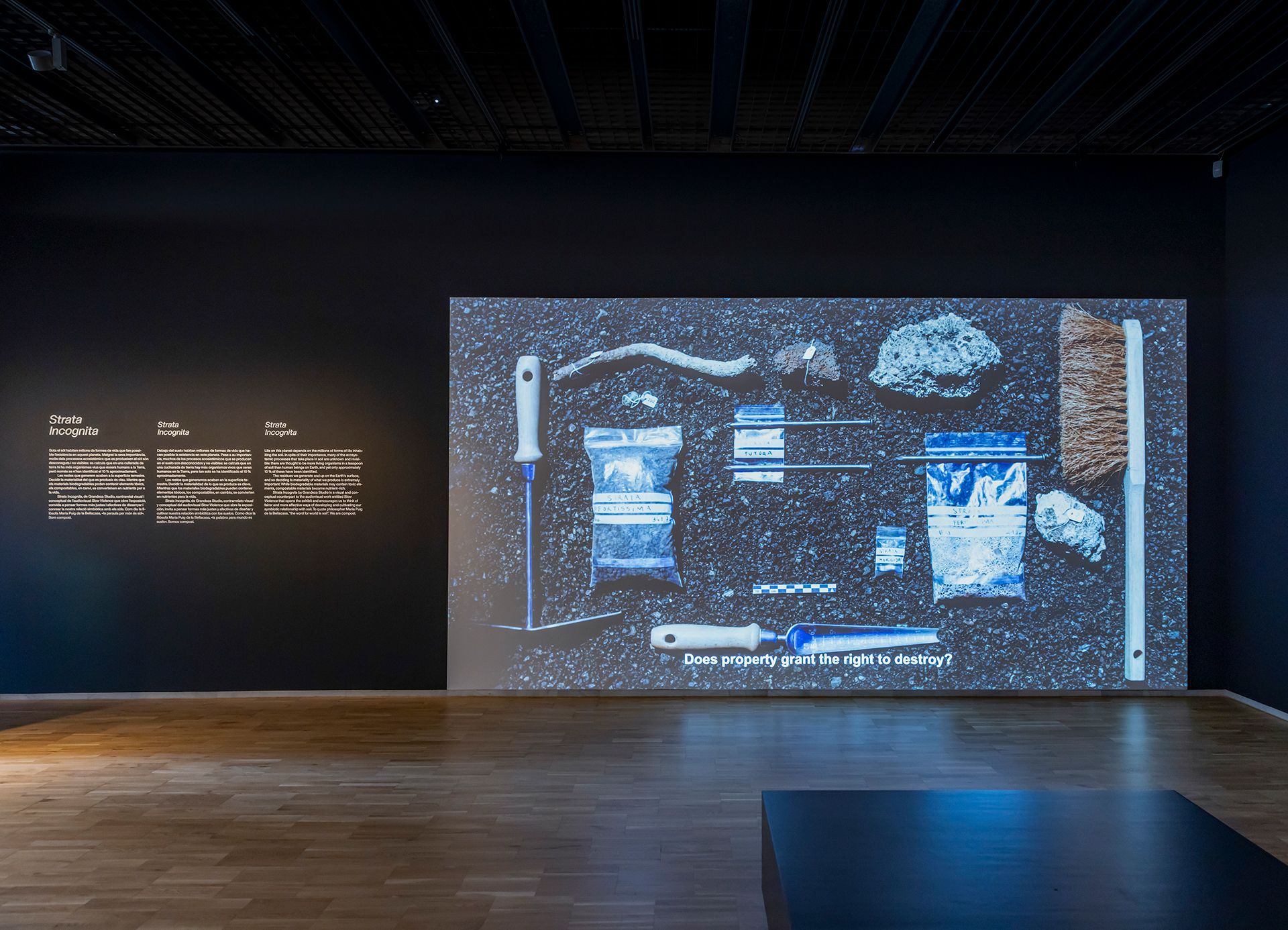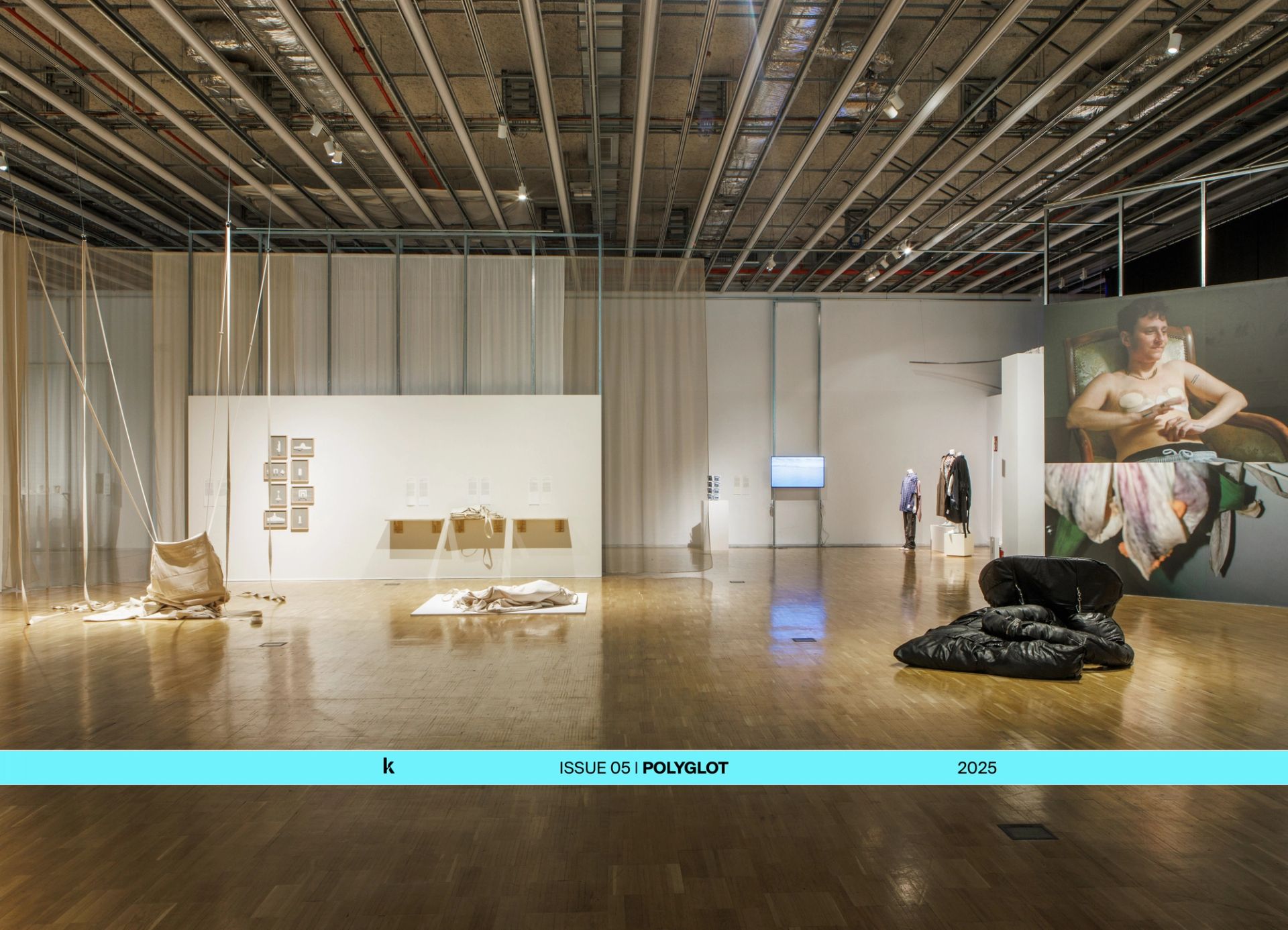The first ten days of the 18th International Architecture Exhibition are in the books. While the ink is still wet, KoozArch takes a moment to look back and joins Paulo Moreira as he strolls around Venice and explores the ways in which the pavilions and exhibitions challenge conventions, ignite dialogue, and redefine the architectural discourse. From repatriating stolen art to decolonising narratives, the Biennale sparks optimism and invites us to push boundaries and reflect on the possibilities of a different future for architecture.
This editorial is part of KoozArch's focus dedicated to Biennale Architettura 2023 - 18th International Architecture Exhibition The Laboratory of the Future, curated by Lesley Lokko and organised by La Biennale di Venezia. The International Exhibition is open in Venice from May 20 to November 26.
Demas Nwoko strolls the narrow streets of Venice. His limited mobility and the absence of any need to hurry set a pleasantly slow pace. The visit to the exhibition of his work — in the heart of the Giardini, one of the main venues of La Biennale — is led by his daughter, Bofu Nwoko Ugbodaga, also an architect and managing director of their design firm New Culture Designs. Joseph Conteh, the Sierra Leonean and British architect who curated the exhibition, is present, too. Some young African architects approach Baba Demas; they are honoured to meet him. Demas Nwoko—Nigerian and African legend—personifies the Laboratory of the Future, the theme chosen for the Biennale by Lesley Lokko, its curator.
Nwoko, who is now 88 years old, works with architecture, painting, sculpture, theatre, stage and furniture design. His practice is situated at the intersection between these areas of knowledge: “I design buildings as I paint pictures, as I sculpt. I don’t make distinctions”. This position frames him as a “practitioner”, a term recurrently suggested by Lokko: “the rich, complex conditions of both Africa and a rapidly hybridising world call for a different and broader understanding of the term ‘architect’.”
In the late 1960s, Demas converted his house in Ibadan into the New Culture Studio School for Arts and Design. This laboratory for artistic creation, which encourages the transmission of ideas across disciplines and between generations, continues to function to this day. When I ask if he has achieved everything he set out to do, his thoughts turn to the future: “The only thing I must do is make sure I pass on what I think is positive in my work to younger people.”
“The only thing I must do is make sure I pass on what I think is positive in my work to younger people.” - Demas Nwoko
It is precisely the younger generation, especially those hailing from Africa and the African diaspora, who take centre stage in The Laboratory of the Future. Their presence is evident in the portraits placed next to the information sheets and captions accompanying their works, lending a human dimension to the content on display. There is a lot to reflect on. This is a Biennale that aims to make us think rather than “consume” architecture.
"there is a sense of desire for dialogue. The multiple layers of complexity are key to understanding the spirit of the exhibition."
By accident, the beginning of my visit to the Arsenale—also a main venue of La Biennale—starts at the end. In the room dedicated to the “Curator’s Special Projects: Food, Agriculture and Climate Change”, there is a sense of desire for dialogue in the selection of projects by BothAnd Group, Gloria Pavita and Margarida Waco, all of which revolve around land and soil issues. The multiple layers of complexity are key to understanding the spirit of the exhibition. Margarida Waco fills me in: “I’m a refugee… and my project is a love letter to Cabinda”. Born in Angola’s oil-rich enclave of Cabinda, she fled the region as a child and grew up between the UK, Denmark and Sweden. In a poetic video and audio installation, working with multiple collaborators, she unveils the land that is home to the ancestral Bakongo people and addresses issues of extractivism and dispossession along the way. These weighty issues echo the absence of a nation—the pro-independence movement does not consider Cabinda part of Angola, whose borders, in turn, are a colonial construct imposed by Portugal and other European countries.
Among the other exhibitions—“Dangerous Liaisons”, “Curator’s Special Projects”, “Special Participants” and “Guests From the Future”—there is a dynamic energy, a genuine desire to expand—rather than shrink—the notion of architectural and cultural heritage. I stop at the work on repatriation of stolen art by Looty, a collective operating in the UK, Nigeria and globally: “Debate rages endlessly around whether artefacts should be physically returned; we have taken matters into our own hands.” This is a Biennale for bold statements, not sugar-coated words.
There is a dynamic energy, a genuine desire to expand—rather than shrink—the notion of architectural and cultural heritage.
As part of the public programme “Urgent Pedagogies: Methodologies” —organised by IASPIS - Swedish Arts Grants Committee and curated by Magnus Ericson and Pelin Tan—I am lucky enough to spend a morning with Sandi Hilal and Alessandro Petti of DAAR (Decolonizing Art Architecture Research). They give a thorough presentation of their project, describing it as a broader reflection on the interconnections between colonisation, modernisation and fascism. At the installation, titled Ente di Decolonizzazione – Borgo Rizza, I sit in one of the “fragments” of the facade of a fascist building in Sicily, Italy, which was supposed to “modernise” the territories viewed as “underdeveloped” and “backward” by Mussolini’s regime.
Modernity, Petti says, “pointed to one way of narrating history; but we need multiple histories”. He explains that DAAR “do not seek an alternative history—which would fall into the same trap —but rather try to listen to new histories that have not yet been heard”. These histories do not come from any particular source: “We can’t expect it to just all work out one day; it’s not like that. We have to work with what we have”, says Petti.
"We need multiple histories [...] try to listen to new histories that have not yet been heard" - Alessandro Petti, DAAR
DAAR’s methodology always begins with alliances on the ground. They have been doing this for years—Sandi and Alessandro founded DAAR in 2007 with Eyal Weizman, when “decolonising” was not yet a trend. They conduct collective research by learning from different sites and connecting with people who feel an urgent need to question colonial, fascist and modernist heritage. The answers are not easily found, but the starting point is to disrupt dominant narratives. “We need to destroy this facade” is Hilal’s assertive, provocative summary.
The notion of “heritage” is often used as a tool to exclude, displace and overlook places and settlements.
It is all very dense and takes time to assimilate. Other projects reflect on the idea of heritage, which is predominantly defined in relation to the national identities endorsed by states and reinforced by canonical sources of architectural knowledge production. The notion of “heritage” is often used as a tool to exclude, displace and overlook places and settlements. But at this Biennale, hidden histories resurface on an intercontinental scale thanks to important projects such as Origins in South Africa, The Nebelivka Hypothesis in Ukraine and An Architectural Botany / Trees, Vines, Palms and Other Architectural Monuments in Brazil.
Back to the Giardini, I decide to revisit Nwoko’s work and witness Francis Kéré introducing himself to Baba Demas. Two prominent figures in African architecture meet, in an almost empty pavilion, in the eye of the storm, amid successive exhibition openings. At the Force Majeure exhibition in the Central Pavilion, Kéré presents the installation Counteract and the audience are again invited to sit. It is as if he is encouraging us to pause in an introspective, almost domestic setting inspired by craftswomen’s wall finishing techniques. In our brief conversation, he refers to his intervention as “a receptacle for life”.
Parliament of Ghosts, by Ibrahim Mahama, also offers a space for gathering and sharing. The small pavilion built by David Adjaye in the outdoor space at the Arsenale, however, falls into a different category. It is an aesthetically appealing work, yet it invites to do no more than enter, walk around and exit. The same is true of his enormous corporate models at the Arsenale and Giardini, whose scale and carbon footprint are a source of unease among several colleagues (the fact that they are named Adjaye Futures Lab does little to help).
As a Portuguese, coming from a European country with a long, problematic colonial past, I was curious to find and connect with Banga Colectivo, a Luanda and Lisbon-based team participating in the “Guests From the Future” section of the Central Pavilion. I was similarly keen to see how the European pavilions in the Giardini approached the theme suggested by Lokko. Albeit with less conviction than one might expect, the celebratory, nationalist model of the Biennale and the exhibition’s role in the city are increasingly being challenged. Some countries reflect on these issues in exhibitions, while others place buildings themselves at the heart of the debate.
The exhibition’s role in the city are increasingly being challenged.
Austria quite literally attempts to overpass the wall separating the Biennale venue from the neighbouring district of Sant’Elena; Germany questions what is to be done with all the resources channelled into the exhibition and Switzerland simply removes part of a wall dividing their pavilion from neighbour Venezuela and creates a bench using the materials. In the Nordic and UK pavilions, the curatorial teams and participants show how the Biennale can serve as a field of experimentation for interdisciplinary spatial practitioners from Indigenous and diasporic backgrounds.
Despite being interesting, very few of these exercises move beyond introspection, in the sense that they all take place inside the walled venue—including the failed project planned by Austria, which was denied permission to open up the pavilion to the city. With this in mind, some countries take a path that might be worth exploring further: holding programmes outside the Giardini. Such are the cases of Case per Tutti, in Giudecca, as part of the German pavilion, and the French pavilion opening party at Caffé Rosso in Campo Santa Margherita. No guest lists, no need to show ID, no million-euro garden or palazzo rentals—just events in the public space, open to anyone who wishes to attend. This genuine, free opening up could point to a way to incorporate the Biennale into city life rather than contributing to an already highly inflated market.
The Laboratory of the Future allows plural versions of history to emerge.
The Laboratory of the Future allows plural versions of history to emerge, moving beyond official narratives. This shift towards pluralisation has enriched the Biennale’s record, but it also illuminates the subtle mechanisms by which politics shapes the architectural profession.
Not long before I leave Venice, the Golden Lion for Best Participant goes to DAAR and Brazil wins Best National Participation. This decision represents a recognition of research and practice that challenges architecture’s often violent legacy—which has long been taken for granted—in imaginative, optimistic ways. It shows an appreciation for time and for reunions, such as that slow stroll by Baba Demas Nwoko and his family.
The Laboratory of the Future appears to have lit up new arenas for architecture.
Bio
Paulo Moreira is a Porto-based architect and researcher. He graduated from FAUP (Portugal) having studied also at Accademia di Architettura di Mendrisio. He completed a PhD at London Metropolitan University, and was a postdoctoral fellow in the University of Lisbon. He is the founder and artistic director of INSTITUTO, and the director of Arquiteturas Film Festival. With his work on informal communities in Angola, he was a finalist in the RIBA President’s Award for Research 2019 and a recipient of the 2021 Grant to Individuals awarded by the Graham Foundation. Moreira is the editor of Critical Neighbourhoods – The Architecture of Contested Communities (Park Books, 2022).





